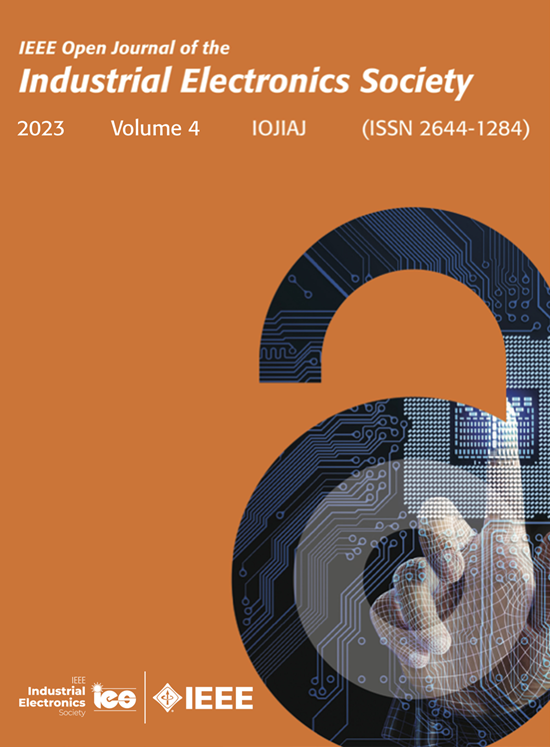用于六相逆变器的增强型 SVPWM 技术:降低电流谐波和共模电压
IF 4.3
Q1 ENGINEERING, ELECTRICAL & ELECTRONIC
IEEE Open Journal of the Industrial Electronics Society
Pub Date : 2024-12-09
DOI:10.1109/OJIES.2024.3512588
引用次数: 0
摘要
降低电流谐波和共模电压(CMV)对六相电动汽车至关重要,因为它不仅延长了关键部件的使用寿命,还显著提高了车辆的整体性能、运行效率和改进的热管理。本文介绍了一种新颖的六相逆变器空间矢量脉宽调制(SVPWM)开关序列,旨在显著降低相电流的CMV和总谐波失真(THD)。该方法优化选择最小和/或零CMV的开关状态,并保证在x - y子空间中的平衡分布,从而产生零电压和零电流分量。比较分析了现有的两种SVPWM技术:参考SVPWM序列-1 (RSVM1),以最低的THD而最高的CMV而着称,以及六相不连续CMV序列-2- a2 (6Φ-DCMV2-A2),具有最低的CMV但较高的THD。实验设置和MATLAB仿真验证了研究结果。在调制指数为0.9和0.1时,与RSVM1相比,所提出的SVPWM的CMV分别降低了23.86%和89.42%。对于非对称六相感应电机和R-L负载,其THD分别比6Φ-DCMV2-A2低16.67%和36.72%。此外,三种SVPWM技术显示出相当的导通、开关和总体逆变器损耗。本文章由计算机程序翻译,如有差异,请以英文原文为准。
Enhanced SVPWM Techniques for Six-Phase Inverters: Mitigation of Current Harmonics and Common Mode Voltage
Reducing current harmonics and common mode voltage (CMV) holds highest importance for six-phase electric vehicles, as it not only prolongs the lifespan of crucial components but also significantly enhances overall vehicle performance, operational efficiency and improved thermal management. This article introduces an innovative switching sequence for space vector pulsewidth modulation (SVPWM) in six-phase inverters, aimed at significantly reducing CMV and total harmonic distortion (THD) of phase currents. The proposed method optimally selects switching states with minimal and/or zero CMV and ensures balanced distribution in the
$x - y$ $x - y$
求助全文
通过发布文献求助,成功后即可免费获取论文全文。
去求助
来源期刊

IEEE Open Journal of the Industrial Electronics Society
ENGINEERING, ELECTRICAL & ELECTRONIC-
CiteScore
10.80
自引率
2.40%
发文量
33
审稿时长
12 weeks
期刊介绍:
The IEEE Open Journal of the Industrial Electronics Society is dedicated to advancing information-intensive, knowledge-based automation, and digitalization, aiming to enhance various industrial and infrastructural ecosystems including energy, mobility, health, and home/building infrastructure. Encompassing a range of techniques leveraging data and information acquisition, analysis, manipulation, and distribution, the journal strives to achieve greater flexibility, efficiency, effectiveness, reliability, and security within digitalized and networked environments.
Our scope provides a platform for discourse and dissemination of the latest developments in numerous research and innovation areas. These include electrical components and systems, smart grids, industrial cyber-physical systems, motion control, robotics and mechatronics, sensors and actuators, factory and building communication and automation, industrial digitalization, flexible and reconfigurable manufacturing, assistant systems, industrial applications of artificial intelligence and data science, as well as the implementation of machine learning, artificial neural networks, and fuzzy logic. Additionally, we explore human factors in digitalized and networked ecosystems. Join us in exploring and shaping the future of industrial electronics and digitalization.
 求助内容:
求助内容: 应助结果提醒方式:
应助结果提醒方式:


